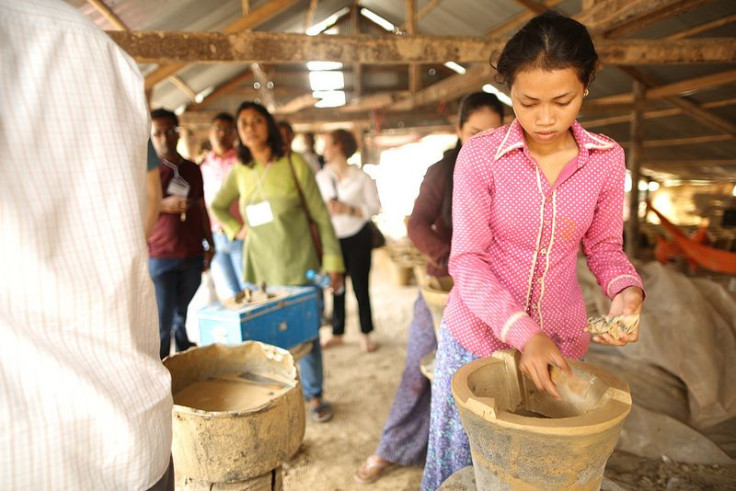Green Development: Advocates Say There's One Simple Solution To Health And Energy Woes In Developing Countries: The Clean Cookstove

Nearly 3 billion people globally cook food and heat their home with simple, open-flame cookstoves, burning wood, coal, scraps of trash and generally anything that burns. The problem is that about 4 million people, at least half children, die every year due to smoke exposure from these methods, and burning fuels like wood and charcoal encourages deforestation and emits carbon molecules that decrease air quality, according to a World Health Organization (WHO) report.
“Cooking on an open fire is the equivalent of smoking two packs of cigarettes per day,” Thomas Setchel, a consultant for Sustainable Technology Systems who helps farmers find self-sustaining energy solutions, said at the United Nations’ 58th Commission on the Status of Women. He was citing a statistic from WHO.
Setchel joined a panel of humanitarians on Thursday advocating for what they say is a simple, low-cost alternative to unsafe coocopyking methods in the developing world -- the clean cookstove.
The clean cookstove is not any one innovation and has a working definition, according to the Global Alliance for Clean Cookstoves (GACC), based in Washington, D.C., and formed by the United Nations Foundation and Hillary Clinton in 2010 when she was secretary of state. The alliance recognizes that consumers prefer different types of stoves for cooking different traditional meals, so it supports a range of cooking technology in its online catalog that meets consumers’ needs, reduces the cost of or time spent collecting fuel, has low emissions and is as safe as possible.
One such cookstove is the 11-pound EzyChar, which is manufactured in China by EzyLife and sells for $25 (USD). The stove has a three-year lifespan, burns charcoal and is marketed to Kenyans for cooking rice, beans, stews, meat and fish.
Other models use solar energy, liquified petroleum gas, biomass, biogas and other sources of fuel.
The average African woman spends one third of her time collecting fuel and cooking, Corinne Hart, program manager for gender and markets at GACC, told those gathered for the panel discussion.
“When families have improved access to clean cookstoves, they can save 60 percent of that time,” she said.
GACC aims for 100 million households to use clean cookstoves by 2020 and is choosing a market-based approach over giving the cookstoves away, though some will be given to refugees. The idea is to persuade women that clean cookstoves are valuable, and then women can buy the cookstoves they value the most, creating demand for safer, cleaner cookstoves over time. GACC is facilitating partnerships between public, private and non-profit organizations to coordinate the large-scale production, marketing and deployment of clean cookstoves in the developing world.
Still, there is yet little widespread research on the benefits of clean cookstoves.
“We need to continue growing the evidence base that clean cooking solutions really do have gender impacts and empowerment impacts and what are the best approaches for enhancing that impact,” Hart said.
Beyond improving health and air quality, clean cookstoves present opportunities for entrepreneurship and business. GACC has launched three projects, in Kenya, South Asia and the Andean region, to research the impacts of clean cooking on women and girls.
On Monday, Sen. Susan Collins (R-Maine) introduced the Clean Cookstoves Support Act, a bill that would support a global market for clean and efficient cookstoves by authorizing existing funding commitments from several federal agencies totaling $125 million and require the secretary of state to advance GACC’s goals.
"Replacing unsafe cookstoves with modern alternatives is the 'low-hanging fruit' of environmental fixes," Collins said in a statement. "It can be done relatively quickly and inexpensively and would improve lives, empower women, and combat pollution around the world."
© Copyright IBTimes 2024. All rights reserved.






















